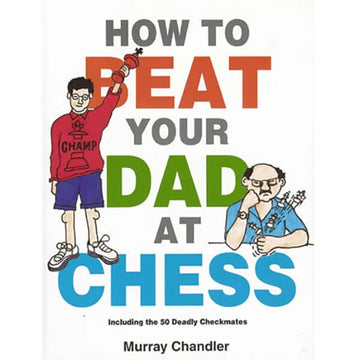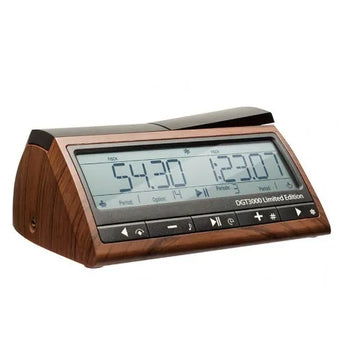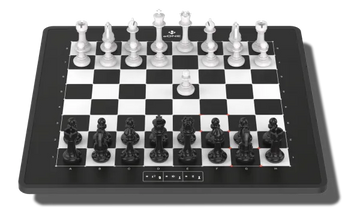10 Must Know Chess Rules for All Players
Chess is a game of rules. If you learn the rules, you can play the game. If you have played chess for some time, you might think you already know all the rules, but make sure you have all ten of these rules figured out, so you don’t get caught in a position where you lose because you misunderstand special moves, castling, en passant, or the touch move rule. So, get ready for ten chess rules to help you dominate in the game of chess.

Rule 1: Legal Piece Movement
Before you can play even one move in a game of chess, you have to know how the pieces move! If you can't play a legal move, then you won’t be able to play chess. For example, the pawn moves one square at a time except on the first move, where it can move two spaces. Even misunderstanding just the pawn could completely change your understanding of the game. Bishops move diagonally, and knights move in an L-shape, with the black knight and white knight moving the same way. Then, the Queen is the most powerful piece, covering even more squares. If you don’t fully understand all the pieces, Lichess offers a great tool for learning them.
Rule 2: King Movement and Check
The king moves one square in any direction, but there is also another essential rule regarding the king: it can never move into danger. Danger, also known as check, is when another piece is attacking your king. For instance, if the black king (or white king) is in check, players must respond with a legal move by moving out of that danger if possible. If the king can’t escape danger, then it is checkmate! One of the biggest mistakes I see beginners make is moving their king into danger, only for their opponent not to notice. Therefore, ensure you are playing legal moves and not moving into check.
Rule 3: Castling – A Very Special Move
I teach castling to every beginner learning chess. It is crucial to get our king to safety, and castling is the most effective way to do so. Castling is when you move your king over two spaces and then put your rook on the other side. There are a few instances when you are not allowed to castle. For example, you cannot castle if there are pieces in the way, if you are in check, moving through check, or if you are currently in check. Additionally, you cannot castle if you have already moved the king or the rook. Castling is one rule that you may need to explain to friends or family when playing, because some beginners unfortunately never learn it.
Rule 4: En Passant – A Confusing Rule
Another rule that you may have to explain to your friends is En Passant. French for “In passing,” en passant is a rule that allows a pawn to capture another pawn when it passes by the other pawn as it is moving two spaces. Look at the example below. The black pawn here just moved two spaces to e5, and because your white pawn is on a square where it could have captured if the pawn were only to move one square (to e6), you can still capture the pawn as it passes by.

Rule 5: Pawn Promotion
Pawn promotion is a rule that will win you games. If you don’t understand pawn promotion, you are missing out on the easiest way to win chess games. When a white pawn or black pawn reaches the other side of the board, it can be promoted. This means that you can change your pawn into a new piece, usually promoting it to a queen, but also a knight, rook, or bishop. Almost all of the time, you should be promoting your pawn to a queen. A queen is the most valuable piece, and making a new one late in a game is the easiest way to win. Checkmating is much easier with more queens!
Rule 6: Touch-Move Rule
Touch-move is a rule that comes more into play with OTB (over-the-board) tournaments. If you touch a piece, then you must move that piece. This does not apply to accidentally touching a piece, but if you grab a piece to move it, then you are required to move that piece, even if it means you are making a losing move. You must make a legal move with the piece you touch. If no legal move is possible, then you can choose a different piece to move. Be cautious before touching a piece. Make sure you have finished your calculations before grabbing the piece. When practicing, try to follow this rule as well to get yourself into the right habit of not touching your pieces.
Adjust
You can adjust your pieces! Just say “adjust” and move the piece to the center of the square. But if you forget to say “adjust” before moving your piece, your opponent may be confused and call you on touch move. To reduce confusion and not have to play moves that worsen your position, just quietly say “adjust,” or even "j'adoube," which is French for "I adjust."
Rule 7: Draw Conditions
There is little that is more frustrating in chess than accidentally getting a draw in a winning position. When you are winning, you should win! But there are different ways a game can be drawn. If you haven't learned about stalemate, it is an important rule to understand.
Stalemate
Stalemate occurs when there are no legal moves in the position, but the king is also not in check. Even though this seems like it could be the same as checkmate, because the king is not in check, the result is a draw. Ensure that there are no other pieces on the board that can move. Learning stalemate will help you avoid embarrassing draws, or find some of your own!

Threefold Repetition
When the same position is repeated three times, then it is a draw. This can be achieved through a perpetual check, where one player who is losing tricks forces their opponent into repeating a position. Be careful, especially if you are in a winning position, that you don’t allow for a perpetual check!
50 Move Rule
A rule even less common than en passant is the 50-move rule. It permits players to claim a draw if no pawn has moved and no pieces have been captured in the past 50 moves. A common misconception, especially among children, regarding this rule is that it means the game is automatically a draw after fifty moves, but that is not the case.
Rule 8: Time Control
To improve in chess, understanding your time usage is crucial. If a player runs out of time, they lose! One of the most common mistakes I see from beginners at chess tournaments is them forgetting to hit their clock. If you are accustomed to playing online chess only, this will be a habit you need to develop. I recommend doing things in this order: Make your move. Hit your clock. Then write down your move. By doing things in this order, you make sure that you don’t forget to hit the clock and lose valuable time. Beginners often lose games simply because they don’t understand the importance of their time and how it can affect their chess matches.
Rule 9: Illegal Moves and Penalties
What happens when you make an illegal move in a chess game? If you are playing online, the computer won't even let you make the move, but OTB, you may face consequences. As mentioned with the touch move rule, if you touch a piece, you will have to move that piece, so making an illegal move could make you lose the game. Often, you will also have a time penalty. This means you could have time added to your opponent's clock. If you are playing a blitz game, you may even forfeit the game with enough illegal moves. If you make an illegal knight’s move or an illegal bishop move, you may need to refresh your memory on how all the pieces move to get better at the game.
Rule 10: Have Fun!
Okay, so this isn’t really a rule, but… It is essential to maintain good sportsmanship at the chessboard. If you slam the table or scatter your pieces, you may be asked to leave or withdrawn from a tournament. Ultimately, chess is better when we can have fun, and all just try to improve. After a game, especially a loss, see if your opponent wants to go over the game. Be sure to shake their hand, congratulate them, and then see if there is anything you can learn from their thought process that you may have missed.
Take that Next Step
Chess is a game full of rules, and the first step to mastery is learning them all. Just by knowing and understanding these ten chess rules, your game will improve. Most importantly, keep playing! Don’t be overwhelmed by the number of rules or things to learn. By playing with friends, family, and other chess players, you will learn any rules that still hold you back from taking the next step.








